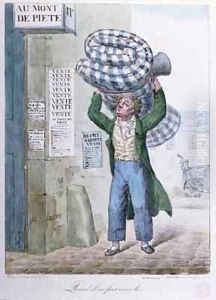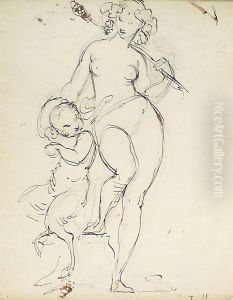Feuchere Paintings
Jean-Jacques Feuchère was a French sculptor who was born on August 8, 1807, in Paris, France. Coming into the art world during a time of transition from Neoclassicism to Romanticism, Feuchère managed to carve a niche for himself with his unique style that blended elements of both movements. He received his initial training from his father, who was a gilder, and later, he studied under the prominent sculptor Jean-Pierre Cortot. Feuchère's early works were heavily influenced by classical antiquity, yet he gradually incorporated more contemporary and romantic elements into his sculptures.
Feuchère is perhaps best known for his work 'Satan,' created in 1833, which exemplified his romantic tendencies and his fascination with the macabre and the fantastic, themes that became increasingly popular in the Romantic period. This piece, along with others, helped to establish his reputation as a sculptor capable of conveying intense emotion and drama. Feuchère's works were characterized by detailed craftsmanship and a dynamic use of form.
Throughout his career, Feuchère also contributed to the decorative arts and was involved in various public commissions, including works for the Louvre and the Palace of Versailles. His sculptures often featured mythological subjects, and he was adept at creating both monumental works and smaller decorative objects. Despite his success, Feuchère struggled with financial instability and the challenges of the competitive artistic climate of his time.
Jean-Jacques Feuchère passed away on December 5, 1852, in Paris, leaving behind a body of work that, although not as widely recognized today, played a significant role in the development of 19th-century French sculpture. His legacy is reflected in the collections of various museums and in the public spaces that continue to house his sculptures.

